Jiying Li's lab
Aquatic Biogeochem @HKUST
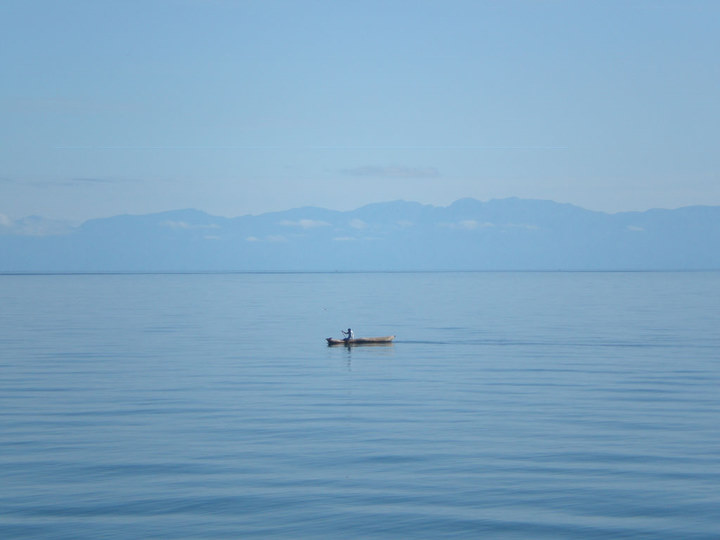
Welcome to our website. We study biogeochemistry in lakes and oceans.
The Hong Kong University of Science and Technology
Home / Research / Teaching / People / Publications / Join us / News
Current directions and projects
Sediment oxygen consumption and hypoxia in coastal seas
Coastal seas are vulnerable to bottom-water hypoxia (O2 <2 mg/L). In the coastal seas with shallow waters and high rates of sedimentation, large portion of the organic matter produced in the surface water is exported into the sediments, where organic matter degradation can consume oxygen rapidly and contribute significantly to oxygen depletion in the bottom waters. We quantify and parameterize the rates of sediment oxygen consumption with an aim to help improve biogeochemical models that can predict hypoxia.
Phosphorus fluxes and the coupled cycles of P, C, Fe and S in sediments
P fluxes from sediments serve as important internal P sources, control the P dynamics in the water column, and regulate ecosystem functions. However, the strong heterogeneity of the marine ecosystems, from coastal to deep-sea environments, makes it difficult to quantify sediment P fluxes and model its coupling to the water column P dynamics. We study the mechanisms controlling P cycling in sediments, particularly the interacted cycles of carbon, phosphorus, iron, and sulfur, and model P fluxes under environmental variations. Our studied sites span from coastal to continental slope sediments, as well as sediments in special ecosystems such as deep-sea methane seeps.
Sediment nitrogen cycle and fluxes of nitrous oxide (N2O) in coastal oceans
Coastal marine sediments are hotspots of N2O emissions. There, the low oxygen and high ammonium concentrations create favorable conditions for active nitrogen cycling, leading to the production of N2O as an intermediate or by-products. However, N2O fluxes in these dynamic sediments are poorly quantified and the underlying processes are not well understood. We investigate the controls of sediment N2O production and fluxes in the coastal ecosystems around Hong Kong combining field observations, geochemical analyses and molecular techniques. Our studied systems include coastal sediments, seagrass beds, and mangrove ecosystem.
Plankton cope with nutrient limitation using polyphosphate metabolism
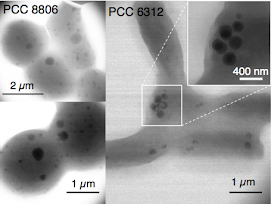 Phytoplankton can accumulate polyphosphate (polyP), a long-chain phosphate polymer linked by high energy bounds. We study how the metabolisms of polyP can help phytoplankton survive stressful conditions, in particularly coping with nutrient limitation by reserving energy and nutrients. We use both 1) culture experiments of cyanobacteria and algae, and 2) field investigations of plankton polyP metabolisms diverse aquatic systems, including freshwater lakes and marine ecosystems covering a wide range of environmental and trophic gradients.
Phytoplankton can accumulate polyphosphate (polyP), a long-chain phosphate polymer linked by high energy bounds. We study how the metabolisms of polyP can help phytoplankton survive stressful conditions, in particularly coping with nutrient limitation by reserving energy and nutrients. We use both 1) culture experiments of cyanobacteria and algae, and 2) field investigations of plankton polyP metabolisms diverse aquatic systems, including freshwater lakes and marine ecosystems covering a wide range of environmental and trophic gradients.
Past Projects
Benthic invaders shift geochemical regimes by impacting sediments
 The invasion of dreissenid mussels (zebra mussels and quagga mussels) in the Laurentian Great Lakes has caused dramatic changes in the ecology and water chemistry. The impacts of mussels on sediments remain unclear. We survey the lake floor of upper Great Lakes (Lakes Superior, Michigan, and Huron), characterize sediment geochemistry and mussel physiology, and investigate the impacts of mussels on exchanges of elements at the sediment-water interface. We develop a whole-system mass-balance model to quantify the mussels’ impact on ecosystem scale, and predict the geochemical trajectory of invaded systems.
The invasion of dreissenid mussels (zebra mussels and quagga mussels) in the Laurentian Great Lakes has caused dramatic changes in the ecology and water chemistry. The impacts of mussels on sediments remain unclear. We survey the lake floor of upper Great Lakes (Lakes Superior, Michigan, and Huron), characterize sediment geochemistry and mussel physiology, and investigate the impacts of mussels on exchanges of elements at the sediment-water interface. We develop a whole-system mass-balance model to quantify the mussels’ impact on ecosystem scale, and predict the geochemical trajectory of invaded systems.
Tracing sources and turnover of phosphorus in the Chesapeake Bay
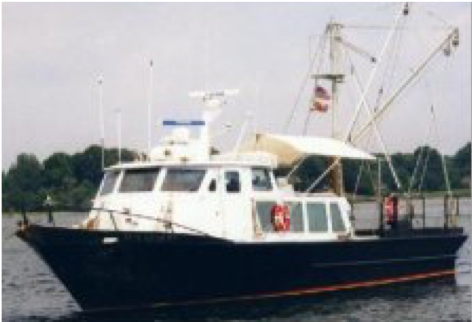 Phosphorus cycling in the Chesapeake Bay is complicated by its dynamic sources and transformations. We use stable isotope tracer (phosphate oxygen isotopes) in combine with traditional geochemical techniques to trace the P sources, reactions, and biological turnover.
Phosphorus cycling in the Chesapeake Bay is complicated by its dynamic sources and transformations. We use stable isotope tracer (phosphate oxygen isotopes) in combine with traditional geochemical techniques to trace the P sources, reactions, and biological turnover.
Sediments in the World’s largest “freshwater sea”
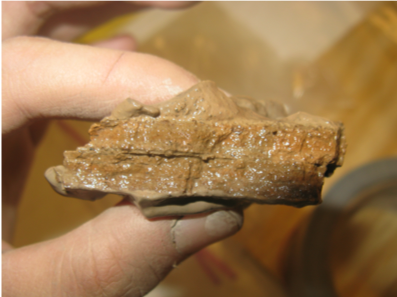 My PhD dissertation works on characterizing the sediment geochemistry of Lake Superior, the world’s largest freshwater lake, and also one of the most oligotrophic waters. The work quantified sediment diagenetic rates and fluxes (of C, N, P, Fe, and S) and investigate their temporal and spatial heterogeneity, develop models to reconstruct and predict water column geochemistry, and describe fundamental mechanisms that can be applied across time and spatial scales.
Some findings include 1) Strong oxygen dynamics in carbon-poor sediments 2) modified sediment nitrogen rates and fluxes explain the accumulation of nitrate in systems experiencing oligotrophication, 3) Anammox (anaerobic ammonium oxidation) contributes significantly to nitrogen loss 4) organic sulfur supports sulfate reduction in low-sulfate environments and 5) phosphorus fluxes in deeply oxygenated sediments are controlled by organic matter mineralization.
My PhD dissertation works on characterizing the sediment geochemistry of Lake Superior, the world’s largest freshwater lake, and also one of the most oligotrophic waters. The work quantified sediment diagenetic rates and fluxes (of C, N, P, Fe, and S) and investigate their temporal and spatial heterogeneity, develop models to reconstruct and predict water column geochemistry, and describe fundamental mechanisms that can be applied across time and spatial scales.
Some findings include 1) Strong oxygen dynamics in carbon-poor sediments 2) modified sediment nitrogen rates and fluxes explain the accumulation of nitrate in systems experiencing oligotrophication, 3) Anammox (anaerobic ammonium oxidation) contributes significantly to nitrogen loss 4) organic sulfur supports sulfate reduction in low-sulfate environments and 5) phosphorus fluxes in deeply oxygenated sediments are controlled by organic matter mineralization.
Geochemical cycles in the tropical meromictic Lake Malawi (East Africa)
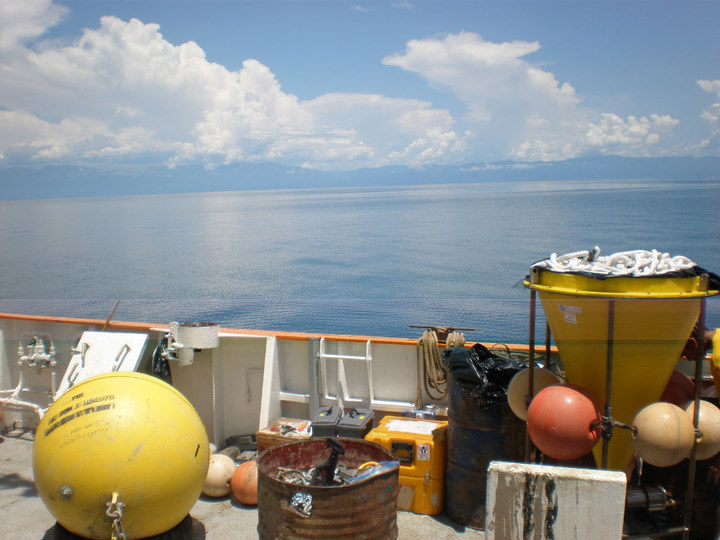 The meromictic tropical Lake Malawi is one of the largest East African Great Lakes, permanently stratified and remain anoxic below 200 meters, with its biogeochemical functioning differs substantially from temperate lakes. We characterized the carbon, nitrogen, and phosphorus cycling in the water column and sediments and compiling whole-lake geochemical budgets.
The meromictic tropical Lake Malawi is one of the largest East African Great Lakes, permanently stratified and remain anoxic below 200 meters, with its biogeochemical functioning differs substantially from temperate lakes. We characterized the carbon, nitrogen, and phosphorus cycling in the water column and sediments and compiling whole-lake geochemical budgets.
 0000-0003-1677-6922
0000-0003-1677-6922